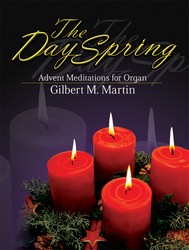- |
User Links
71
Creator of the Stars of Night
Hymn Information
- First Line
- Creator of the stars of night
- Text Source
- Latin hymn, 9th c.; tr. <cite>Hymnal</cite>, 1940, alt.
- Tune Name
- CONDITOR ALME SIDERUM
- Tune Source
- Plainsong mode IV · Arr. <cite>Lutheran Book of Worship</cite>
- Topic
- Church Year: Advent · Church Year: Christ the King · Daily Prayer: Night · Doxologies
Copyright Information
- Text Copyright
- © 1940 Church Pension Fund
- Tune Copyright
- Arr. © 1978 Lutheran Book of Worship, admin. Augsburg Fortress
- Reprint/Projection Information
- Words: Permitted with a license from OneLicense.net. If you do not own this license, please contact the copyright holder for permission.
- Music: Permitted with a license from OneLicense.net. If you do not own this license, please contact the copyright holder for permission.
Scripture References
Further Reflections on Scripture References
Reflected in this song (stanza 2) is the truth that the Messiah came not in splendor, but as a child. See Isaiah 53:1-3.
Stanza 3 reminds us of the promise in Philippians 2:7-8 that every knee shall bow and call him Lord.
Confessions and Statements of Faith References
Further Reflections on Confessions and Statements of Faith References
What is notable about this song is that it concludes with a Trinitarian doxology, thus pointing to the truth that the coming of Christ was clearly a redeeming action involving all three members of the Trinity. Heidelberg Catechism captures the role of each member of the Trinity in Lord’s Day 12, Question and Answer 31 when it professes that Christ is called anointed, because he has been “ordained by God the Father and has been anointed with the Holy Spirit” to be our prophet, priest, and king.
71
Creator of the Stars of Night
Call to Worship
You know what time it is,
how it is now the moment for you to wake from sleep.
For salvation is nearer to us now
than when we became believers;
the night is far gone, the day is near.
Let us then lay aside the works of darkness
and put on the armor of light.
Come, let us worship God.
—based on Romans 13:11-12, NRSV
—
Worship Sourcebook Edition Two
The Lord be with you.
And also with you.
As we enter this season of Advent,
may the love of God the Father, and the grace of Jesus the Son,
and the fellowship of the Holy Spirit be and abide with us all.
Amen!
[Reformed Worship 57:4]
—
Worship Sourcebook Edition Two
Additional Prayers
Creator God,
as we gaze into the heavens
in the quietness and mystery of the night,
we marvel at the splendor
of all that you have made.
We are humbly grateful
for the ways you have gifted us
to discover the wonders of the heavens,
so far beyond all that we might have imagined.
Then, when we discover that the one
through whom you made all of this
comes among us to heal and save us,
our hearts overflow
with astonishment and wonder.
We can only begin to fathom
the depths of your love.
How great you are.
How marvelous are your ways!
Alleluia! Amen.
—
Lift Up Your Hearts (http://www.liftupyourheartshymnal.org)
The Lord is glorious and exalted.
Lord, shine in our hearts and lives.
God’s people are often in distress and sorrow.
Lord, show your might and deliver us from evil.
We sometimes do not feel the Lord’s presence.
O Lord, let your face again shine on us.
The Lord was the shepherd of his people Israel.
Lord, lead us in our way and guide us in our walk.
In this Advent season we stand on tiptoe—
Immanuel, invade our lives. Amen.
—based on Psalm 80:1-7
[Reformed Worship 9:23]
—
Worship Sourcebook Edition Two
Lord of hope,
as night workers long for the sunrise,
we long for the coming of Christ.
In our worship today we yearn for your Spirit
to give us a glimpse of your glory,
that one day we will see in full,
when all will be made new,
through Christ, our Lord, our light. Amen.
[The Worship Sourcebook]
—
Worship Sourcebook Edition Two
71
Creator of the Stars of Night
Tune Information
- Name
- CONDITOR ALME SIDERUM
- Key
- c minor
- Meter
- 8.8.8.8
Musical Suggestion
One of the great mystical hymns of the early church, this should convey a sense of the awe and mystery of the incarnation. Even when accompanied, Gregorian chant should be sung with a strong sense of phrase, rather than placing stress on each beat. (Remember, there was no meter or time signature when this was written!) If your congregation sings well, take away the safety net of the piano and organ, singing it in unison a cappella. A low G handbell can give the pitch and ring throughout each verse.
—
Greg Scheer
71
Creator of the Stars of Night
Hymn Story/Background
This anonymous Latin hymn from the 9th century or earlier comes from the tradition of signing during the Daily Office, in this case for Vespers during Advent. Sing this chant tune in four phrases, observing speech rhythms—not in the strict eight-note rhythms that the notation might suggest.
Bert Polman
This simple melody with a range of only six notes is an example of syllabic chant. The melody was named AMBROSE by Lowell Mason, on the assumption that Saint Ambrose had written the text, but it is more often called CONDITOR ALME after the Latin text with which it has traditionally been associated.
This ancient plainsong melody was sung by Protestants after the Reformation with a variety of German texts, including two by Michael Weisse, a leader of Bohemian Brethren communities. J.S. Bach later used the melody in some of his organ works.
-The New Century Hymnal Companion, The Pilgrim Press, Cleveland, Ohio, 1998, p. 267
—
New Century Hymnal Companion
Suggestions or corrections? Contact us


 My Starred Hymns
My Starred Hymns







